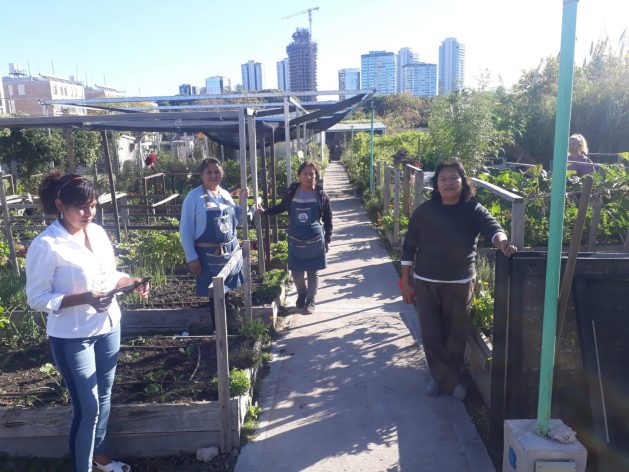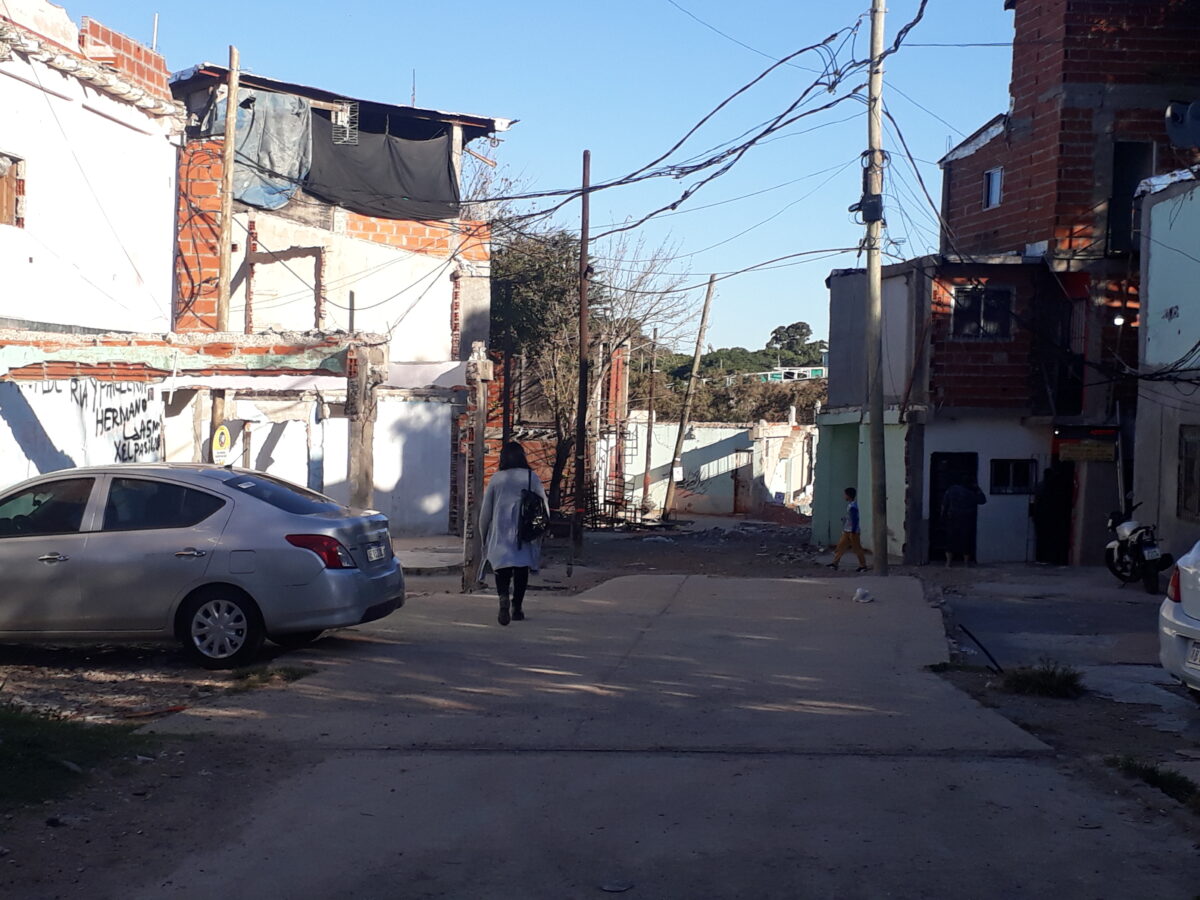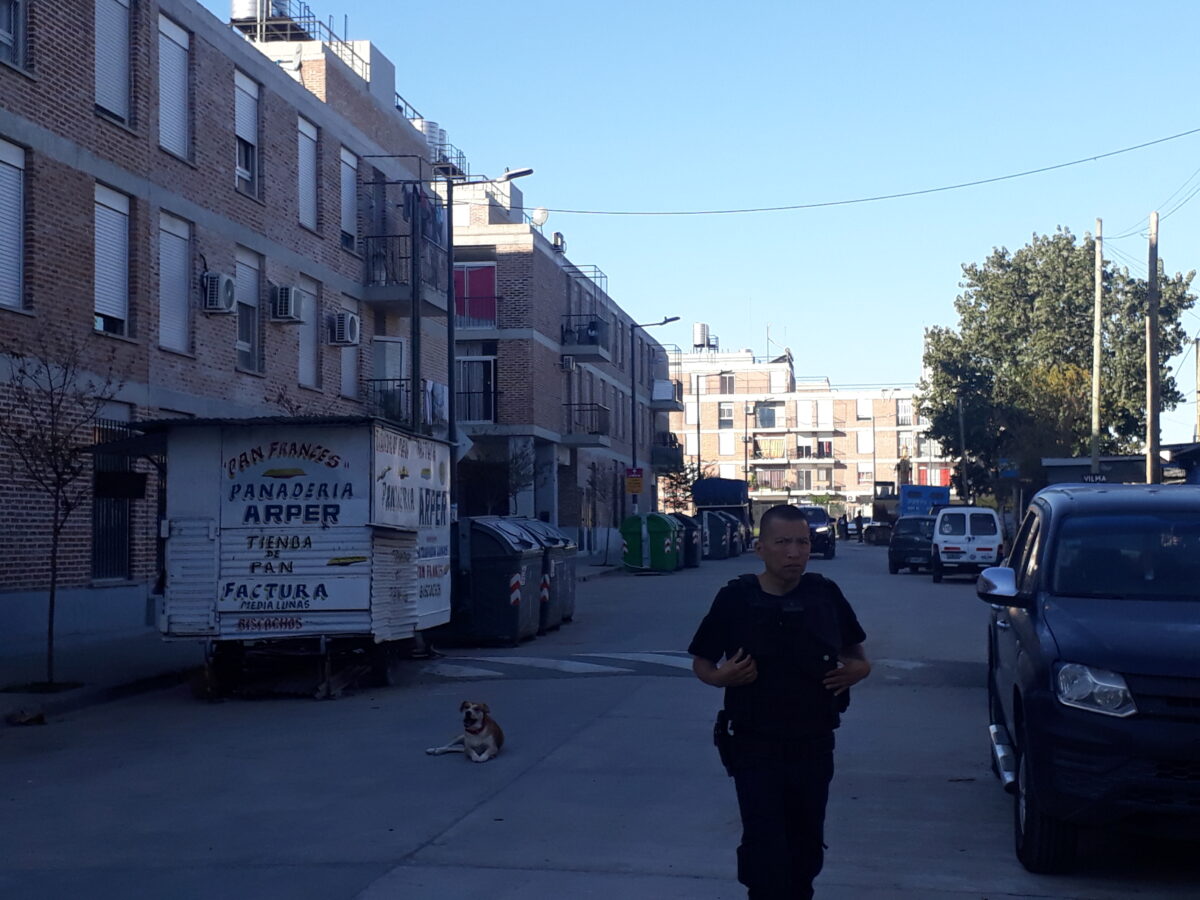[ad_1]

BUENOS AIRES, Apr 21 (IPS) – The area consists of simply 300 sq. meters filled with inexperienced the place there may be an agro-ecological vegetable backyard and nursery, that are the work and dream of 14 girls. Behind it may be seen the imposing silhouettes of the excessive rises which can be a logo of essentially the most fashionable and sought-after a part of Argentina’s capital metropolis.
However the Vivera Orgánica (Natural Nursery) kinds a part of one other actuality: it’s situated in a low-income neighborhood which has been reworked in recent times due to the work of native residents and to authorities assist.
“We began with the concept of rising some contemporary greens for our households. And right this moment we’re a cooperative that opens its doorways to the neighborhood and in addition sells to individuals who come from everywhere in the metropolis, and to corporations,” Peruvian immigrant Elizabeth Cuenca, who got here to Buenos Aires from her nation in 2010 and settled on this neighborhood on the banks of the La Plata River, tells IPS.
The Barrio Rodrigo Bueno emerged as a shantytown within the Eighties on flood-prone land within the south of Buenos Aires.
It’s just some blocks from Puerto Madero, an space occupied for many years by deserted port warehouses, which because the Nineties has been renovated and gentrified, experiencing an actual property increase that has made it essentially the most sought-after by the rich in Buenos Aires.
The distinction between the uncovered brick homes of Rodrigo Bueno, separated by slender, usually muddy corridors, and the slick glassy 40- or 50-story skyscrapers constructed between the huge streets of Puerto Madero turned a strong picture of inequality in Larger Buenos Aires, a megacity of practically 15 million inhabitants.
Nonetheless, right this moment issues are utterly completely different in Rodrigo Bueno, named after a well-liked singer who suffered a tragic demise in 2000.
It is among the 4 shantytowns within the metropolis (out of a complete of about 40, based on official figures) which can be within the strategy of urbanization – or “socio-urban integration”, because the Buenos Aires metropolis authorities describes the method.
Since 2017, streets have been widened and paved, infrastructure for public service supply was introduced in, and 46 buildings with 612 new flats had been constructed, which now home practically half of the neighborhood’s roughly 1,500 households.
Most of the previous precarious homes had been demolished whereas others nonetheless stand alongside the brand-new flats, awarded to their new homeowners with 30-year loans.
“When the urbanization course of started to be mentioned, we began having abilities and trades workshops and there was one on gardening, which was attended by many ladies who, though we lived in the identical neighborhood, didn’t know one another,” says Cuenca.
“That is how we realized, we organized ourselves and had been capable of get an area for the Vivera, which we inaugurated in December 2019. As we speak we promote greens and particularly seedlings for individuals who need to begin their very own vegetable gardens at dwelling. We do not earn wages, however we generate an revenue,” she provides.

Bringing dwelling gardens to life – and extra
In simply over two years, the ladies of the Vivera Orgánica have achieved some milestones, such because the sale of seven,000 seedlings of various greens to the Toyota vehicle firm, which gave them as items to its staff.
They’ve additionally bought agroecological greens to the swank Hilton Resort in Buenos Aires, which is situated in Puerto Madero, and have arrange vegetable gardens on land owned by Enel, one of many largest electrical energy distributors.
However they’ve additionally earned respect from the general public. “The unbelievable factor is that the pandemic was a fantastic assist for us, as a result of many individuals who could not go away their properties began to turn into focused on consuming more healthy or rising their very own meals. We obtained a number of orders,” says Jesusa Flores, a Bolivian immigrant who is among the founders of the Vivera.
She was working as a cleaner and caring for the aged in household properties, when she misplaced her jobs as a result of restrictions on motion aimed toward curbing the COVID pandemic.
“La Vivera has been essential for me, as a result of it’s close to our properties and we will all the time come right here,” says Flores.
The nursery receives no authorities subsidies and the 14 girls earn little cash from it, so nearly all of them produce other jobs. However they’re all assured that they’ve the potential to develop and that the nursery will turn into their solely job sooner or later.
“Through the worst interval of the pandemic, we put collectively 15 packing containers a day with 12 seedlings to promote, however we obtained 60 orders a day. We couldn’t sustain with demand,” says Angela Oviedo from Peru, who can also be a member of the group.

The hurdles thrown up by casual employment
The Buenos Aires metropolis authorities offers technical assist for the Vivera Orgánica as a part of the neighborhood’s socio-urban integration course of.
Low-income sectors in Argentina have been hard-hit because the strategy of devaluation of the peso started 4 years in the past, accompanied by excessive inflation, resulting in a steep plunge in buying energy, particularly for employees within the casual economic system.
In 2020 the disaster was exacerbated by the COVID-19 pandemic, which induced the economic system to shrink by 10 %. And whereas nearly all the losses had been recovered in 2021, the alarming reality is that a lot of the jobs which have been created since then are casual.
Based on information from the Argentine Ministry of Labor, Employment and Social Safety, in January this yr there have been 6,034,637 registered employees within the non-public sector, down from 6,273,972 in January 2018, earlier than the beginning of the recession.
The Buenos Aires metropolis authorities’s Ministry of Human Improvement and Habitat estimates that there are some 500,000 employees within the casual economic system within the capital, who’ve been the toughest hit by inflation, which reached 6.7 % final March, the best fee for a single month in Argentina within the final 20 years.
Many analysts warn that poverty, which within the second half of final yr fell from 40.6 % to 37.3 % based on the Nationwide Institute of Statistics and Census, will develop once more in 2022.

Help in becoming a member of the formal sector
“In poor neighborhoods there are a lot of companies, however the issue is that due to the scenario within the casual economic system, they face huge hurdles with the intention to develop and to have the ability to join with the formal market,” explains Belén Barreto, undersecretary for the Improvement of Human Potential within the authorities of Buenos Aires.
“One situation has to do with productiveness: on the whole, the entrepreneurs work in their very own properties and will not be capable of scale up considerably. That’s the reason we assist the Vivera with technical help, so the challenge can attain manufacturing ranges enabling it to promote within the metropolis’s formal worth chains,” she provides in an interview with IPS.
Barreto says that one other impediment has to do with advertising and marketing: entrepreneurs discover it tough to promote their merchandise outdoors the setting wherein they reside, regardless of the expansion of on-line gross sales.
“That’s the reason our focus is on linking these small companies with corporations in order that they’ll turn into their suppliers with the intention to earn a extra sustainable revenue and scale up their manufacturing via a brand new market. Final Christmas we held enterprise roundtables and managed to get extra corporations to purchase items from the social and standard economic system, for a complete of 17 million pesos (about 150,000 {dollars}),” she provides.
Lastly, to deal with the issue of entry to credit score for casual employees, in 2021 the Buenos Aires metropolis authorities created the Social Improvement Fund (Fondes), a public-private fund for the social and standard economic system.
The regular development of the casual economic system additionally prompted the native authorities to create final yr the Registry of Productive Items of the Fashionable and Social Financial system, which permits entry to tax advantages and has up to now registered some 3,000 self-managed models.
The transformation of the neighborhood has additionally introduced better alternatives for native residents, who are sometimes victims of discrimination and prejudice.
Cuenca, for instance, explains that “we did not used to have an handle to offer once we had been on the lookout for a job, and it was impossible that we’d get known as again.”
She sees the Vivera Orgánica as one other software for a extra dignified life: “This challenge is a part of the neighborhood and a part of us; we now really feel that now we have completely different prospects.”
© Inter Press Service (2022) — All Rights ReservedAuthentic supply: Inter Press Service
[ad_2]
Source_link


